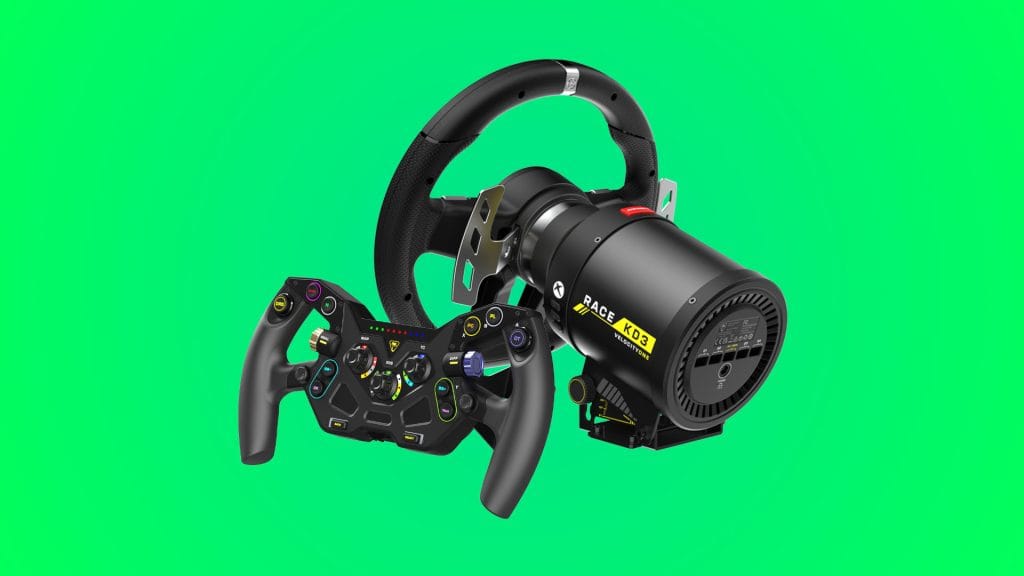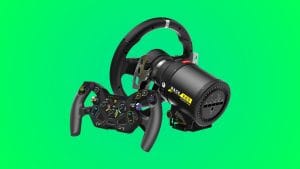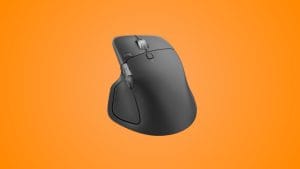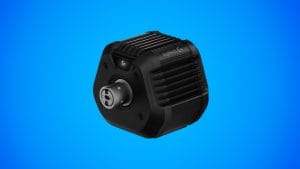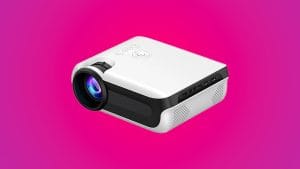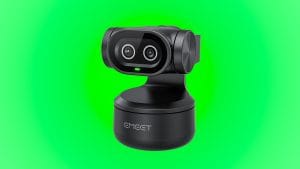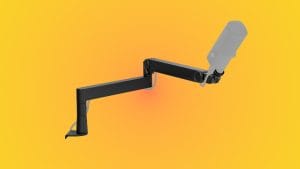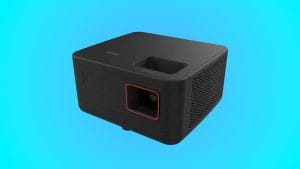Thrustmaster EVO Racing Hub and 32R Leather Wheel Rim

design
There’s two separate aspects to consider with the Thrustmaster ECO Racing 32R Leather, both theoretically and physically. While they arrive as one bundle and in the same box, the four words in the name evenly split in two and that’s how we’ll review them here. Part one is the EVO Racing hub and part two is the 32R Leather racing wheel.
The EVO Racing Hub is the heart of the operation and is designed as the basis of an ecosystem rather than a single, standalone wheel like you see with other setups. While it feels solid enough, the EVO hub is almost entirely plastic which is disappointing given other similarly priced wheels like the MOZA CS V2P offer full metal and carbon fibre builds. It’s a point of order I raise on a lot of upper-mid range devices, but even the thinnest of aluminium casings makes such a difference in how premium a product feels and the Thrustmaster EVO Racing hub falls short in this area as a result.

There’s an impressive range of inputs across the EVO Racing Hub face with nine buttons, four rotary encoders and a thumbstick that are all within close enough reach. The D-pad thumbstick in particular is pleasantly clicky and responsive with a nicely textured, domed top that makes it easy to use with confidence mid-race. Cleverly the rotary encoders can also be pressed as a button, offering an extra input, something I haven’t seen on other wheels that is a nice quality of life addition.
Disappointingly however the Thrustmaster EVO Racing Hub again lacks a premium vibe across the board when it comes to inputs. There’s wobble in every button and noticeable wiggle in each encoder which takes the edge off the experience. The buttons offer a standard click rather than having a high-end mechanical feel like those on other wheels and there’s no backlighting on any of them either which feels like a massive oversight. Each of the EVO Racing Hub’s inputs is labelled with a number rather than a specific use which I don’t mind personally, but strangely the included sheet of extra stickers only replicates the numbers in different styles, rather than offering more descriptive choices which could have been a nice middleground.
check latest prices
Around the back of the Thrustmaster EVO Racing Hub you’ll find two wonderfully large, curved paddle shifters which were a real highlight of the wheel hub for me. Noticeably oversized but without being cumbersome, I found them to always be in reach across a full range of hand positions. Each can be moved in or out a few mm to offer some level of customisation but their overall size and reliable activation meant I never needed to consider this. I also found them much quieter than those on other racing wheels like the MOZA GS V2P GT, if that’s a factor for your setup.

The Thrustmaster EVO Racing Hub is designed to be the start of an expanding ecosystem and your first and only option is the Thrustmaster 32R Leather wheel rim. As simple as a wheel gets, it’s a standard 32cm round wheel that should be suitable for a range of racing types and grip positions. Like its name suggests, the Thrustmaster 32R Leather is wrapped in a soft synthetic leather that’s pleasant to hold with a nice balance of comfort and practicality. The bright yellow stitching adds a touch of flair and cleverly stops a couple of centimetres short of the crossbar which prevents it digging into your thumb when using the Thrustmaster 32R Leather as a formula style wheel.
performance
You’ll find two connectors in the Thrustmaster EVO Racing Hub box that make it wholly compatible with the entire range of Thrustmaster wheelbases, something it’s hard not to applaud in a modern world of redundant tech. There’s no gatekeeping here either, I’ve paired it with the entry-level belt-driven Thrustmaster TX Servo Base but it’ll work equally well with the brand’s top end options. It’s not the most elegant or clever solution, you’ll need to fiddle around with four tiny star screws to attach or swap the connector, but it’s a secure fit and I imagine not something many will be regularly changing anyway.
check latest prices
The same is true of the wheel rim itself, the 10 tiny screws are a faff to remove but are a belt and braces approach that does result in a super secure fit. You won’t need to be undoing them for the time being as the 32R Leather is the only EVO Racing Hub compatible rim though Thrustmaster tells me this is set to change in the very near future. Even the box already shows sketches for different styles of wheels, including a formula shape, so I can’t imagine they’ll be too far behind the 32R Leather.

On track and across different racing titles the Thrustmaster EVO Racing 32R Leather performed nicely. The wheel rim is comfortable to hold and translates force feedback nicely, even from the relatively weak TX Servo Base I tested with. I was impressed at how versatile this wheel was from one game to the next, for sim racers looking to play across different genres of racing it’s a solid choice. Naturally as a completely round wheel the 32R Leather felt most at home in Forza Motorsport and EA WRC, but holding it edge to edge in F1 23 I still felt in control. It’s quite a light wheel rim so there is a little bit of flex under heavy load but it’s not something I particularly noticed while racing.
The most eye-catching element of the Thrustmaster EVO Racing Hub itself is the row of bright, colourful LEDs along the top of the unit. These are dual purpose, either conveying rev or race information and they’re mighty effective at both. I’d go as far as to say these are the most useful rev lights I’ve been hands on with. Not only are they deeply saturated with real punch to their brightness, they’re also positioned in such a way that they’re constantly in your peripheral vision without being a distraction. Even without focusing on them specifically I was able to drink in their information which is exactly what you need.
summed up
The Thrustmaster EVO Racing Hub and 32R Leather wheel rim are both sound choices that don’t disappoint, but neither really sets itself apart from competitors at this price point. The EVO Racing ecosystem is a clever idea that has excellent potential for expansion but middle of the road design and execution choices mean it’s not destined to lead or majorly shake up the sim racing space.
That said, for new sim racers looking for a customisable option, it presents a more compelling argument. The Thrustmaster 32R Leather wheel rim itself offers a good all-round starting point that works well across different racing genres. An example of a simple idea executed well, its comfortable handfeel and smart stitching make it pleasant to race with. Ultimately though the Thrustmaster EVO Racing Hub and 32R Leather wheel are going to come down to a matter of use case. Neither stand out as being worthy of heavy recommendation but it’s unlikely either will let modest sim racers down either.

